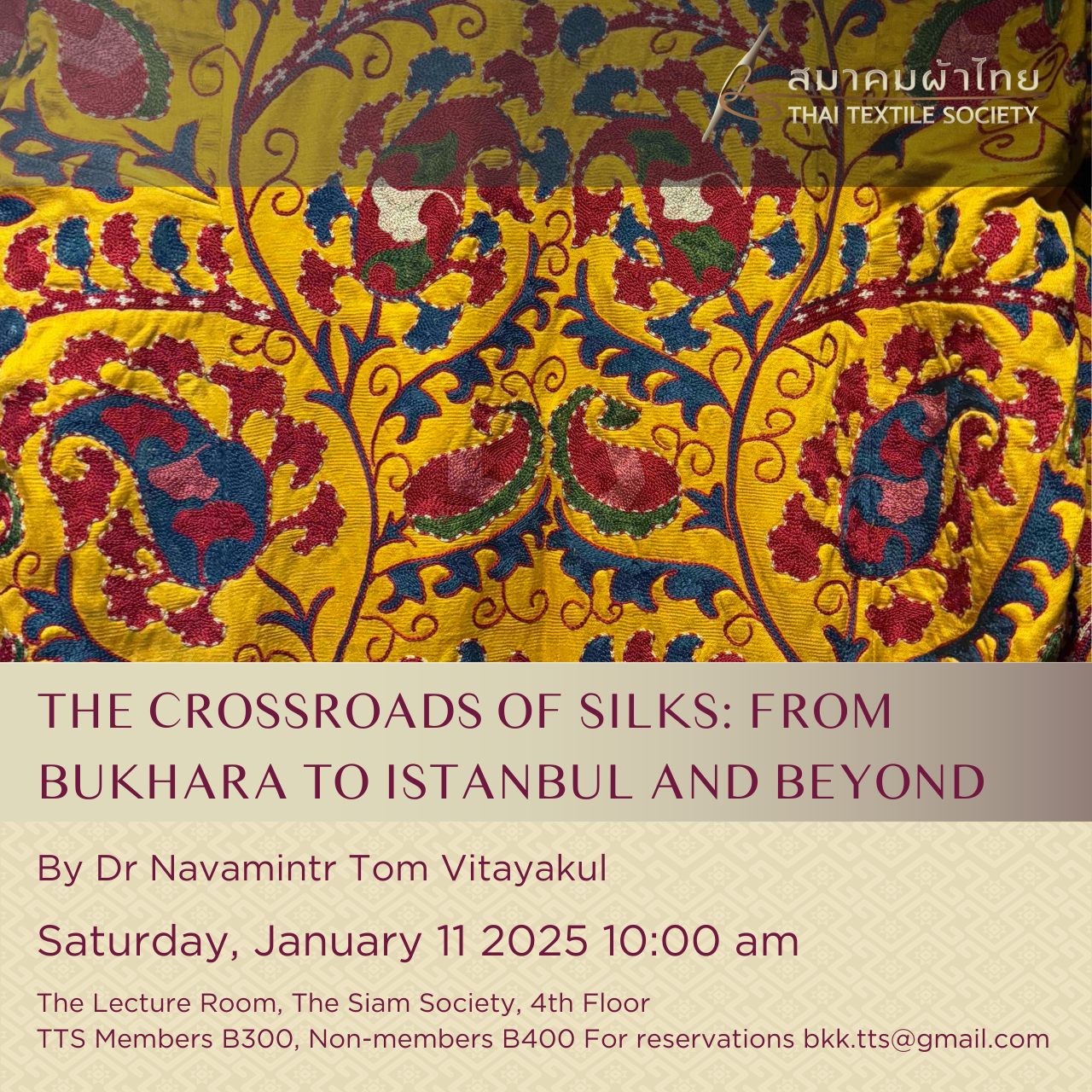Past Activities
The Crossroads of Silks: From Bukhara to Istanbul and Beyond
The Silk Road or the Silk Routes, a network of Eurasian trade routes, derives its name from the highly lucrative trade of silk textiles. Its intricate web of land and sea routes connects Southern Europe and East Africa to Central Asia, all the way to East Asia. It played a vital role in facilitating economic, cultural, political, and religious interactions between the Eastern empires and Western worlds. Central Asian countries now lie at the crux of these routes. They still produce beautiful and mesmerizing textiles and carpets in Uzbekistan, Turkmenistan and other countries. Among these textiles, Uzbek ikat fabrics stand out with vibrant, bold, often contrasting and unimaginable colour combination. They are the foundations of very bright, distinctive and comfortable Uzbek national costumes. As part of the rich cultural customs and lifestyle, they are worn for everyday attire and traditional festive events. These colourful clothes have a story to tell; a story that unfolded as the Uzbek people mingled with neighbouring nations in a rich pageant of human history and evolution, with their own symbols and religious significance. These ikat and also embroidered suzani textiles have gained particular popularity over the past few decades. Their resurgence appears from fine fashion to interior decorations.
Dr Navamintr Tom Vitayakul works in his family’s businesses of the Rose Bangkok, the Rose Residence and Ruen Urai. He is a Council Member at The Siam Society Under Royal Patronage and a Committee member at the Thai Textile Society. As a collector, he spoke at three Collector’s Corner programmes on his textile collections from Thailand, Cambodia, India and Indonesia and contributed several articles and photos in TTS’s former newsletters and Pah Thai.
